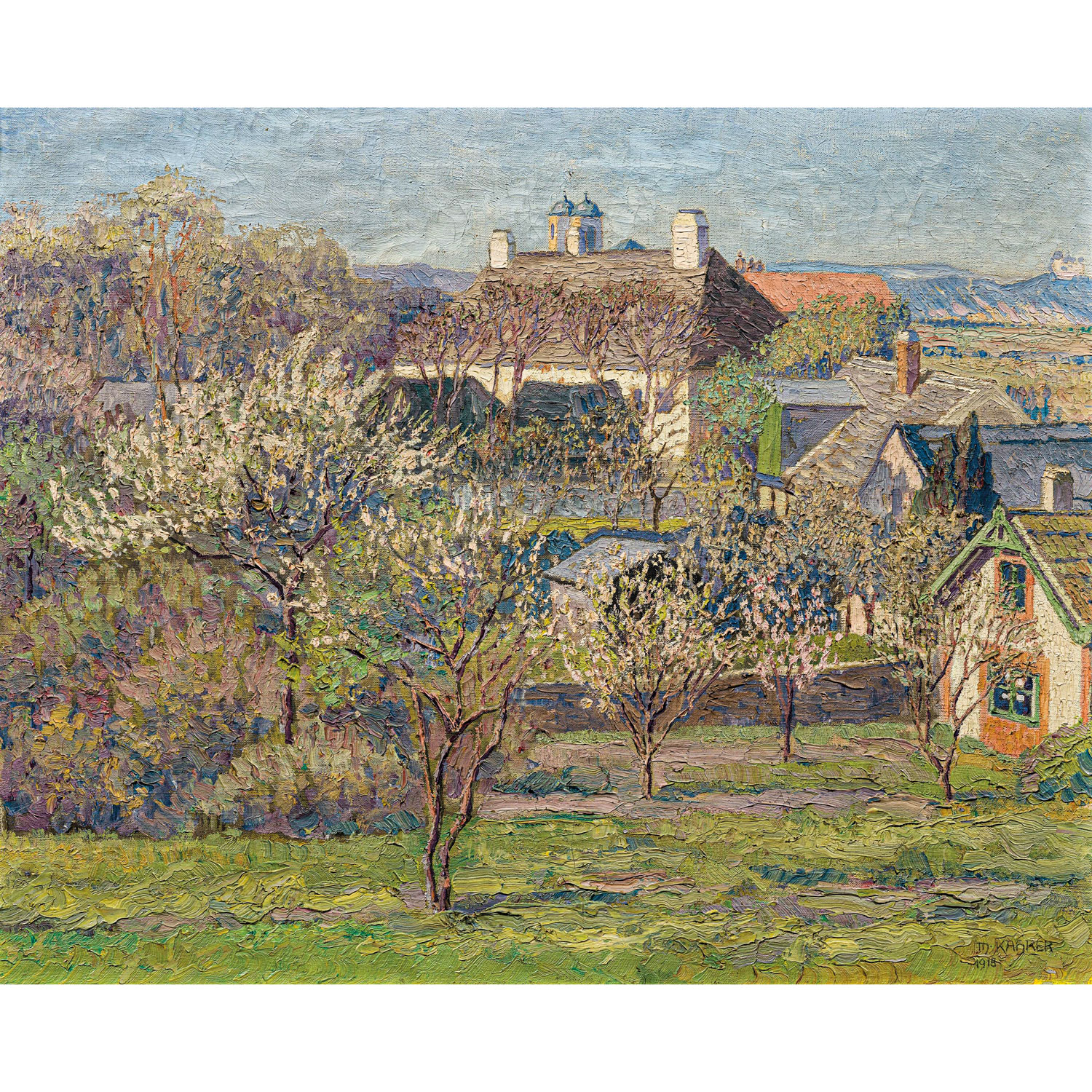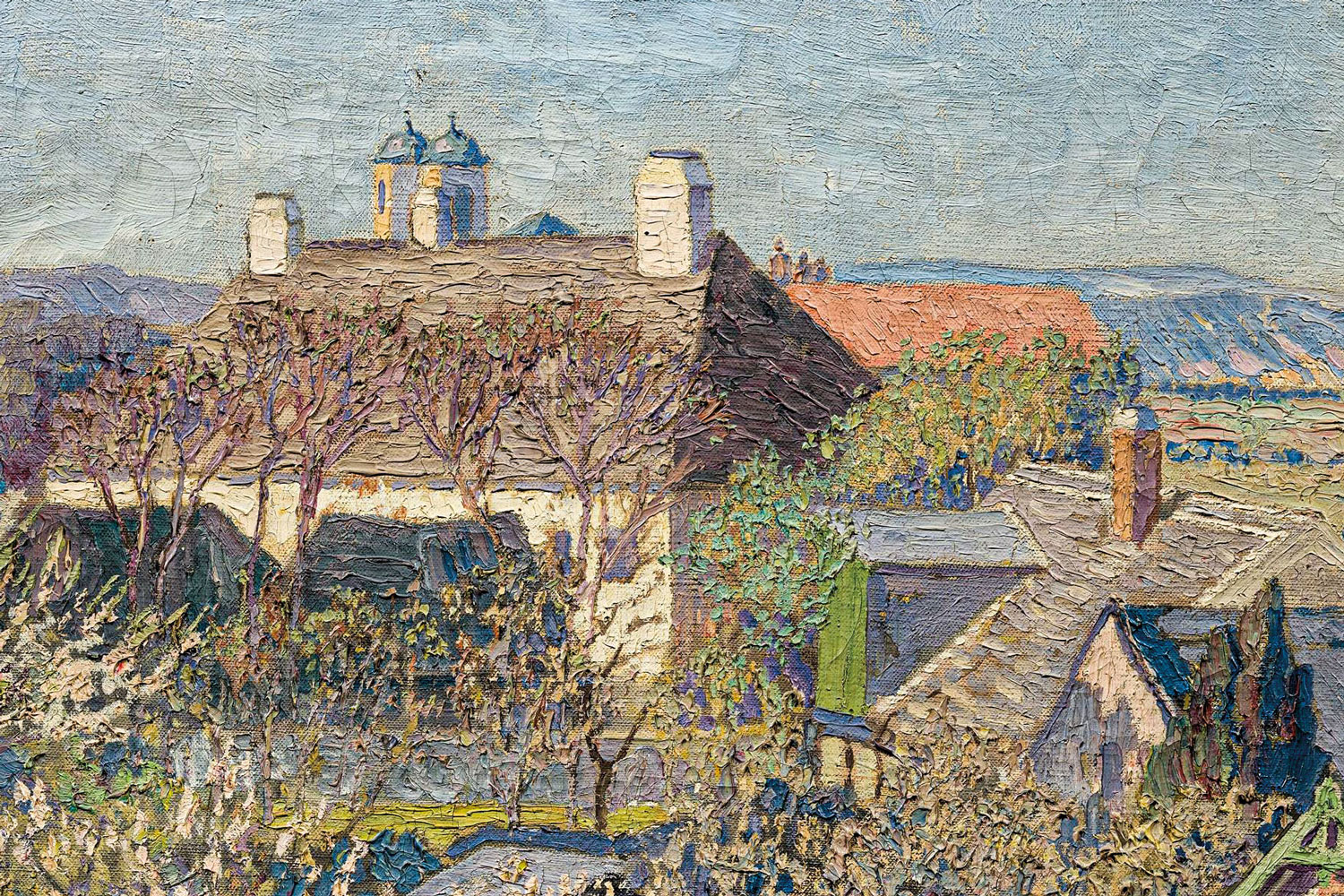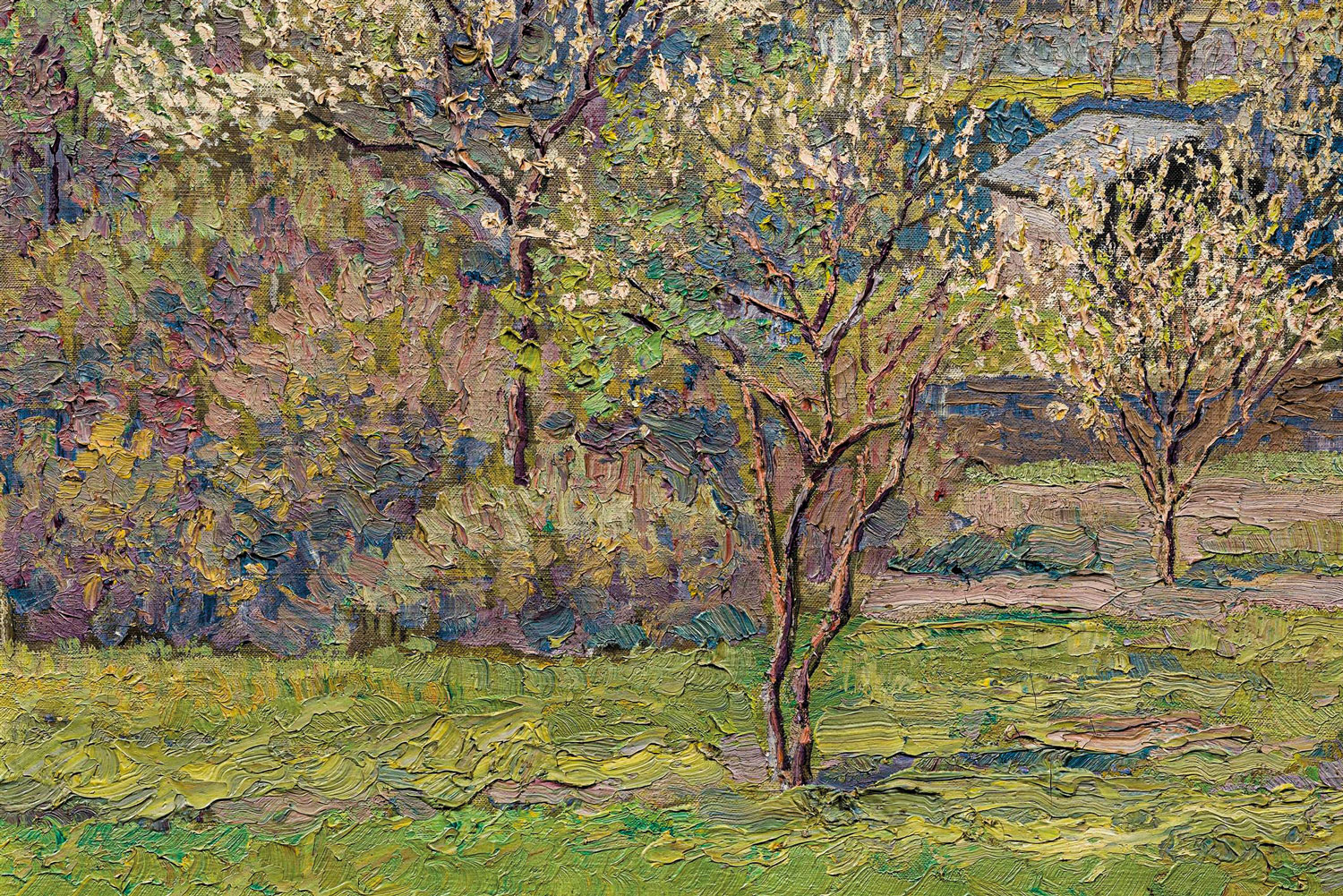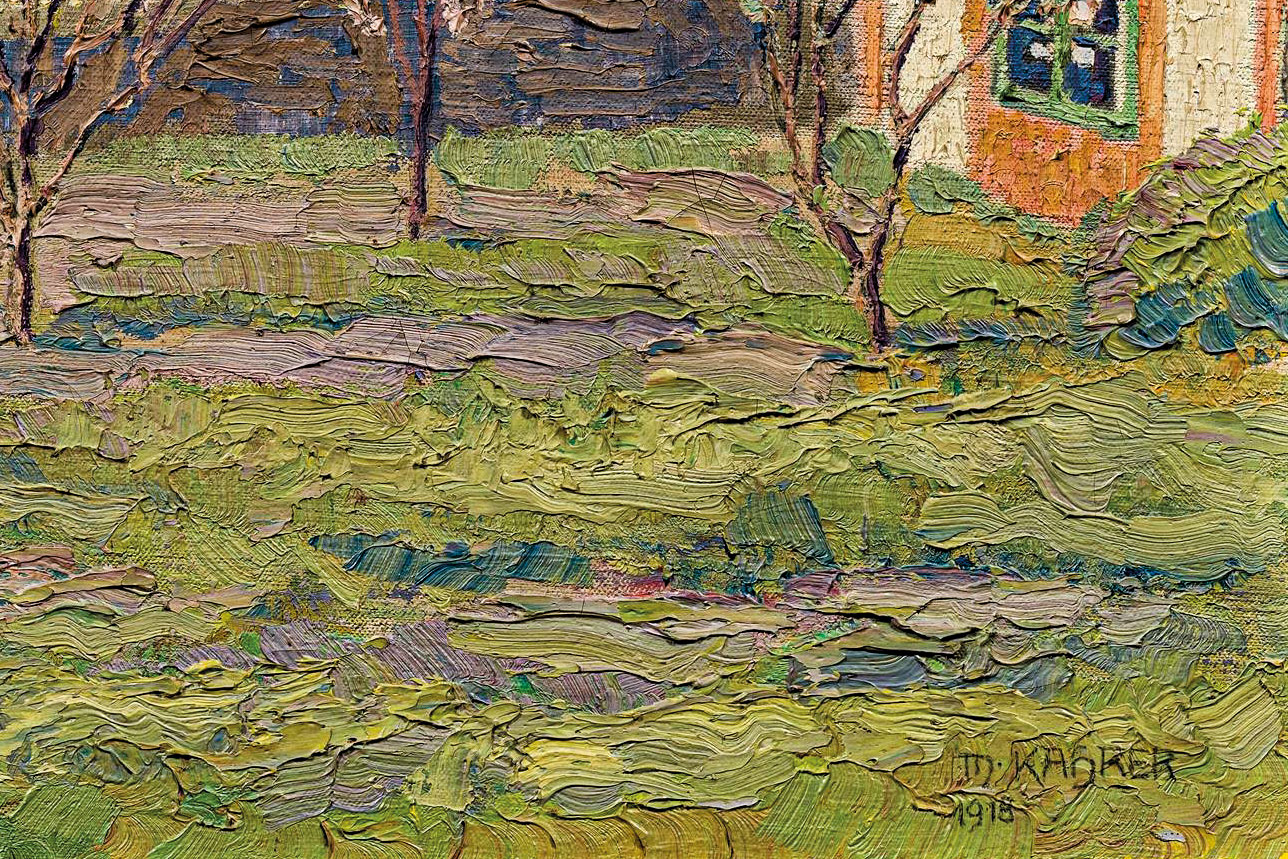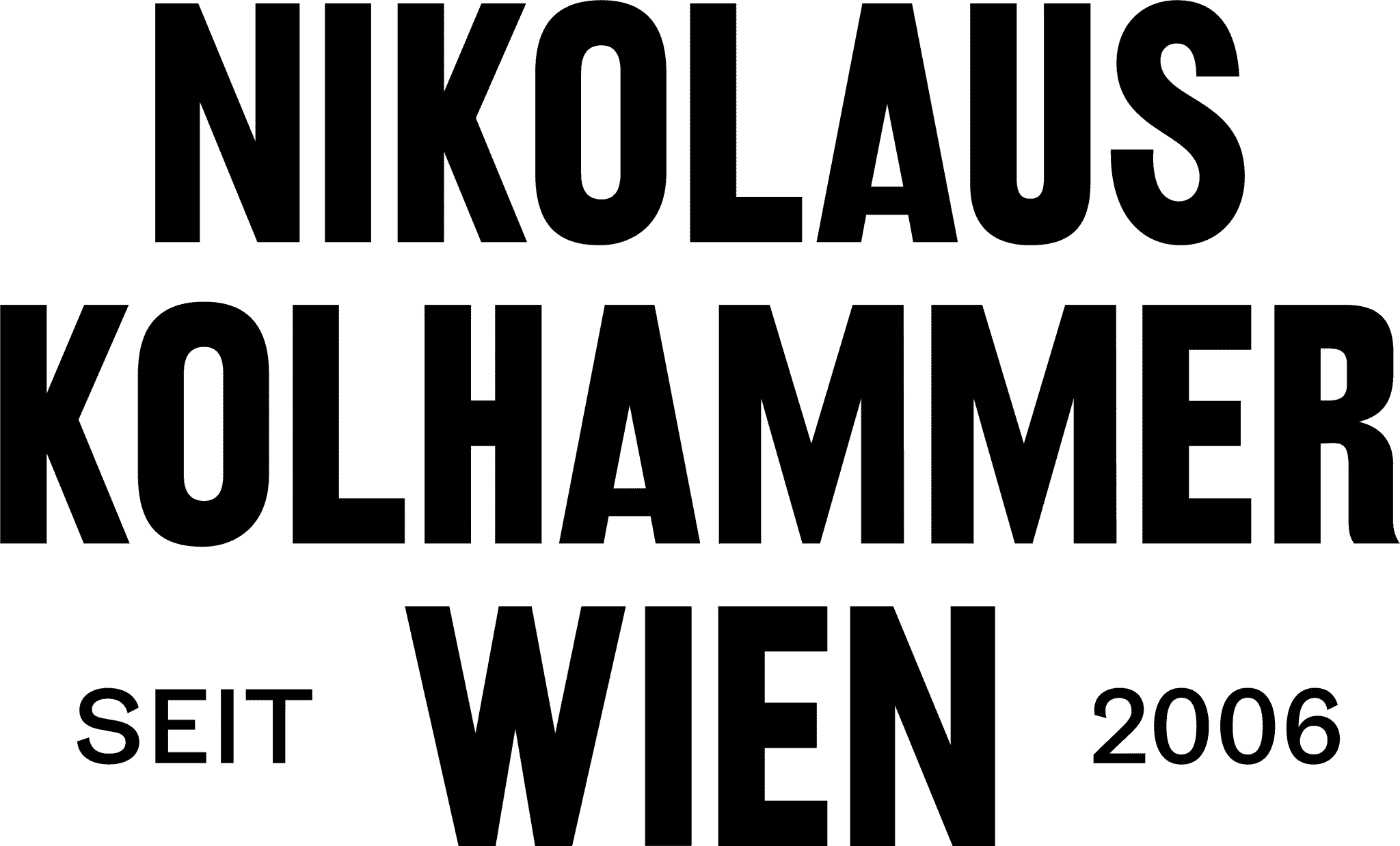Max Kahrer “View on blooming orchards” 1918
Max Kahrer (1878-1937), “View on blooming house gardens – Klosterneuburg”, oil on canvas, 1918, signed
Description
The paintings by Max Kahrer exude a strong attraction. His initially impressionistic approach is significantly shaped around 1900 by the influence of the Vienna Secession. However, the encounters with Egon Schiele during his time in Klosterneuburg are also of great importance to his oeuvre. Kahrer is primarily known for his landscape paintings depicting motifs of his hometown, Klosterneuburg, and its surroundings, where he spent most time of his life. His paintings are characterized by a friendly, pastel, and vibrant color palette, often capturing intricate play of light. Here, a blossoming orchard provides the inspiration for a cheerful springtime scene. From a subtly elevated vantage point, the painter gazes down upon a slope with backyard gardens, and behind them, a few houses. Fruit trees in the foreground are in bloom, their delicate white and pink blossoms hinting at the awakening of spring. Even though the motif might be modest, Kahrer succeeds in creating a marvelous snapshot of rural life in perfect harmony with nature with this painting.
Artist
Maximilian Kahrer (Timisoara 1878 – 1937 Klosterneuburg) studied at the Vienna Academy under Franz Rumpler and Christian Griepenkerl. In 1903, he was already active in the artists' association Hagenbund, where he was a member from 1905 to 1907. In 1908, his first self-organized exhibition took place in Klosterneuburg Abbey. During this time, Kahrer also became acquainted with Egon Schiele, who made several portrait sketches of Kahrer. Kahrer also exhibited at the Secession exhibition in 1908 and in the Wiener Künstlerhaus from 1920 on. Kahrer mainly created landscape paintings from the surroundings of Klosterneuburg. Portraits or still lifes are rarer. His paintings are characterized above all by a friendly, lively color palette. Even with excessive use of cool blue and green tones, his motifs never appear cold or repellent but reflect the beauty of nature. Today, works by Max Kahrer can be found in the Austrian Belvedere Collection and the Wien Museum.
Inquiry
By submitting the inquiry form, you agree to the use of your data for this inquiry. Privacy Policy


